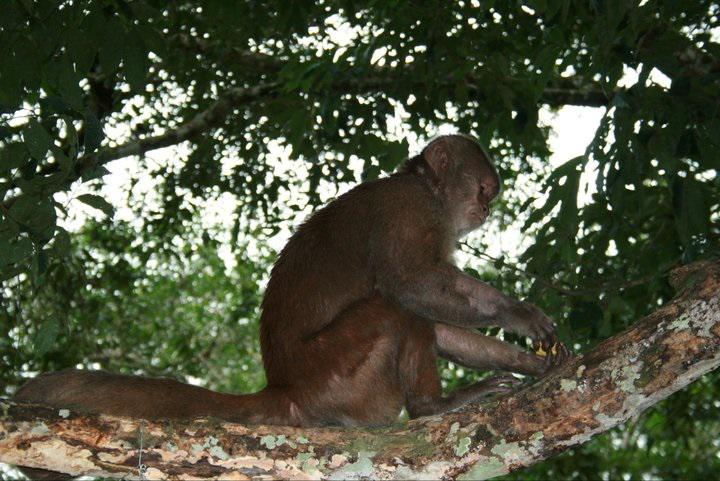Tessa Roorda
The aim of the project is to evaluate the role of Muriquis in seed dispersal of a tropical tree, identifying consequences of anthropogenic disturbances to this ecological association.
For my PhD project I will study the mutualistic association between a rainforest canopy tree (Cryptocarya mandioccana), and a highly endangered primate species known as Muriqui (Brachyteles arachnoides). Muriquis are the largest primates of the Americas, and believed to be the main dispersal agent for C. mandioccana large seeds. Both species are endemic to the Atlantic Forest, Brazil, a biome that is one of the top biodiversity hotspots for conservation priorities in the planet.

It is accepted today that effective conservation strategies must also protect ecological processes. Seed dispersal is an ecological process that provides resources to animals while promoting gene flow of plants. As a consequence, seed dispersal maintains higher genetic diversity levels in plant populations, preventing their extinction. In this project, to quantify the contribution of Muriquis to C. mandioccana gene flow, I will compare subpopulations of this plant from sites with different degrees of anthropogenic pressure. Through this approach I will also infer long term consequences for the disturbance of this ecological process.
Thanks to the support from Rufford Small Grants, in 2011 I will be able to work on the first steps of this project. This year I will describe and compare the seed dispersal communities of C. mandioccana in the different study sites, using camera traps and direct observations. I will also collect preliminary data on seed removal and germination rates, and describes C. mandioccana demographic structure in the different sites. This information will be essential for my following years of study, when I will use leaf samples to estimate and compare the genetic diversity promoted by seed dispersal between the different C. mandioccana subpopulations.
Furthermore, since local communities can be responsible for a strong impact over the environment, I will give lectures about my project to schools, and hire local residents to assist me in the field. Through these interactions I am hoping to increase the awareness of these communities to the importance of preserving the Muriquis and their forest. I will also communicate my final results to park managers, local authorities and the NGO Pró-Muriquis Association, to contribute with effective conservation strategies for the few remaining areas of Atlantic forest.